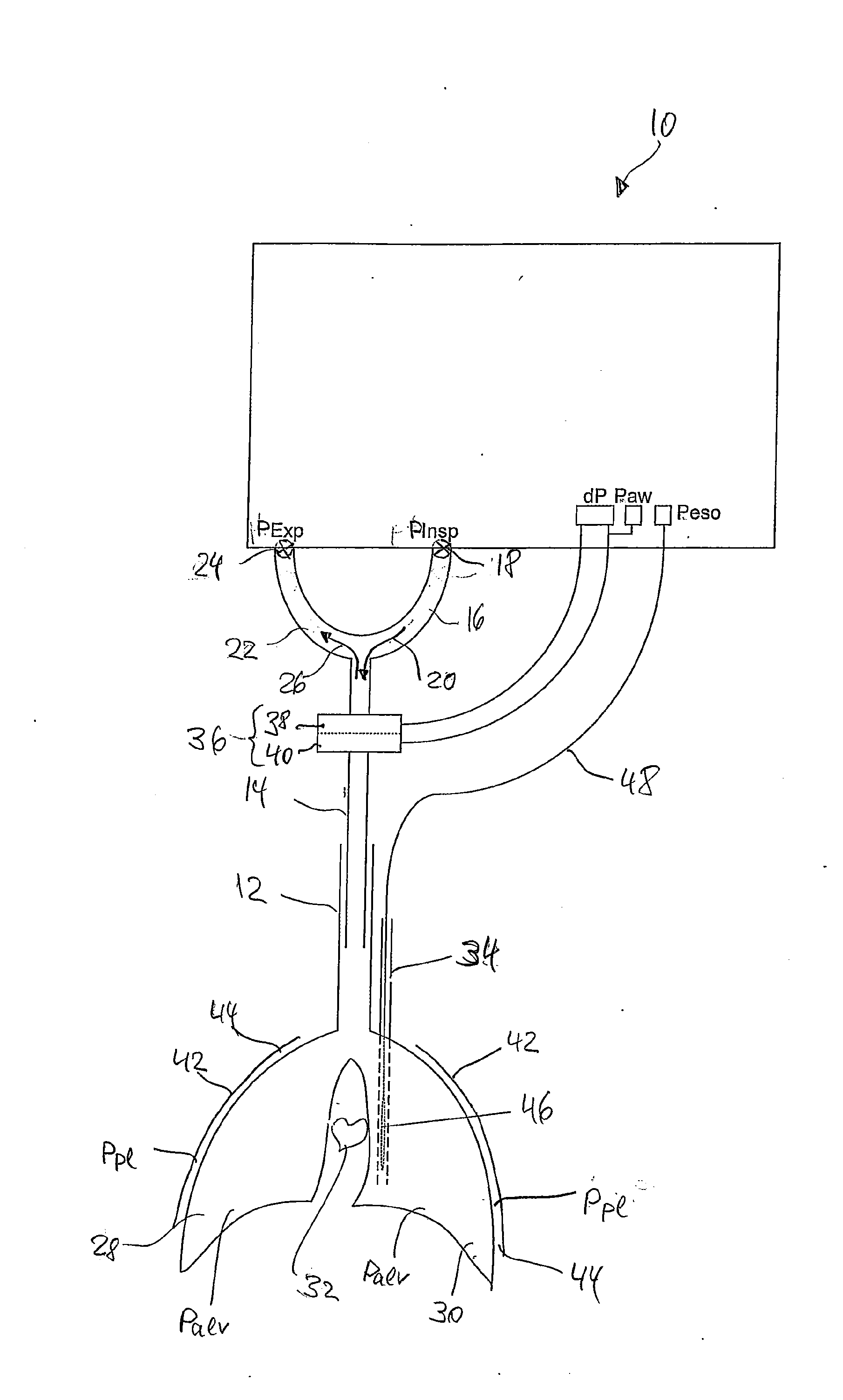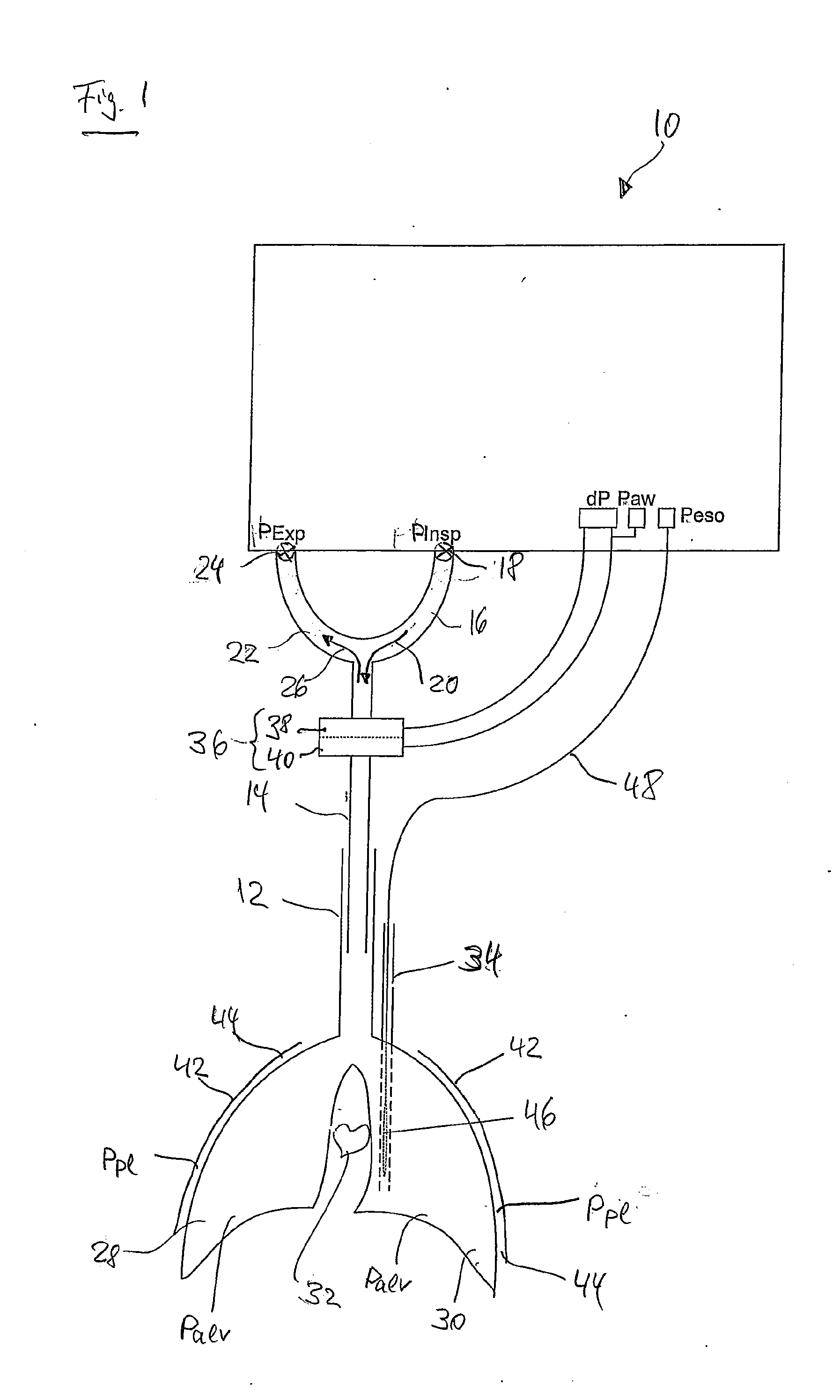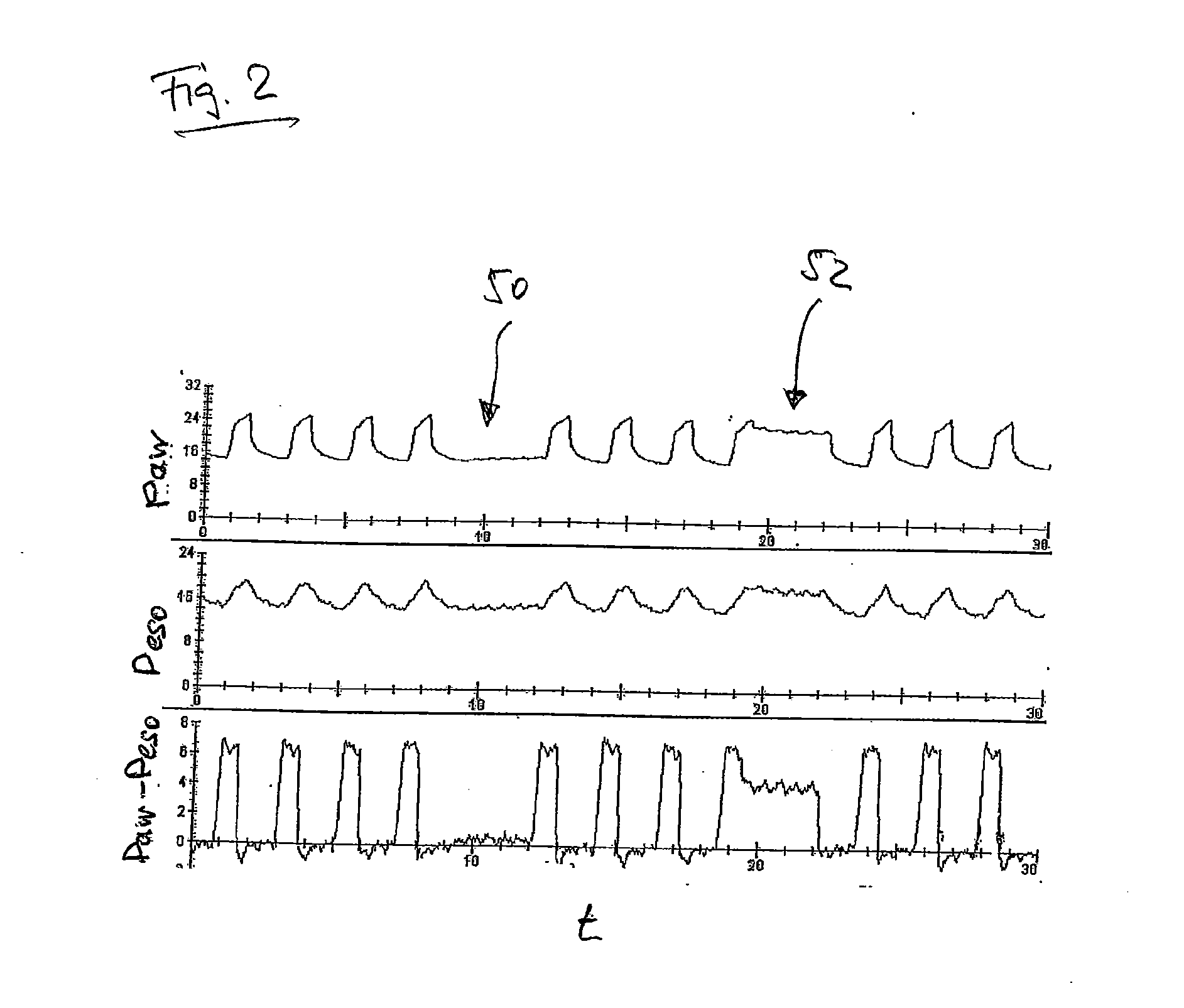System for automated adjustment of a pressure set by a ventilation device
a technology of automatic adjustment and ventilation device, which is applied in the direction of valve operating means/releasing devices, applications, diagnostic recording/measuring, etc., can solve the problems of reduced oxygen saturation, severe impairment of the functional residual capacity of the lungs, and collapse of alveoli
- Summary
- Abstract
- Description
- Claims
- Application Information
AI Technical Summary
Benefits of technology
Problems solved by technology
Method used
Image
Examples
Embodiment Construction
[0055]FIG. 1 shows the essential elements of a ventilation device 10 in a highly schematic representation and in the form of a block diagram. The ventilation device 10 is shown in FIG. 1 in a state with intubated windpipe (trachea) 12 of a ventilated patient. In addition to the trachea 12, FIG. 1 very schematically illustrates the lung lobes 28, 30, the heart 32, the gullet (esophagus) 34 and the chest wall 42 of the patient. The tube 14 of the ventilation device 10 is pushed a certain distance into the trachea 12, usually via the mouth opening (not shown) of the patient, in order to supply breathing gas to the airway. Exhaled air is discharged via the tube 14 as well, which branches at its upstream end into a first end 16 and a second end 22. The first end 16 is connected via an airway inlet valve 18 to an airway inlet connector of the ventilation device 10 for applying an inspiration pressure PInsp. In the open position of the airway inlet valve 18, the inspiration pressure PInsp ...
PUM
 Login to View More
Login to View More Abstract
Description
Claims
Application Information
 Login to View More
Login to View More - R&D
- Intellectual Property
- Life Sciences
- Materials
- Tech Scout
- Unparalleled Data Quality
- Higher Quality Content
- 60% Fewer Hallucinations
Browse by: Latest US Patents, China's latest patents, Technical Efficacy Thesaurus, Application Domain, Technology Topic, Popular Technical Reports.
© 2025 PatSnap. All rights reserved.Legal|Privacy policy|Modern Slavery Act Transparency Statement|Sitemap|About US| Contact US: help@patsnap.com



